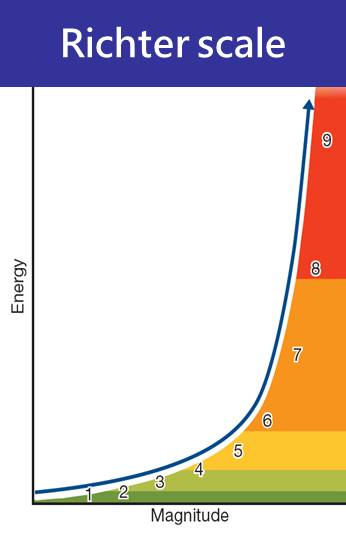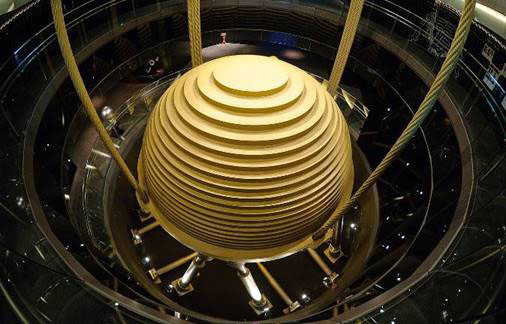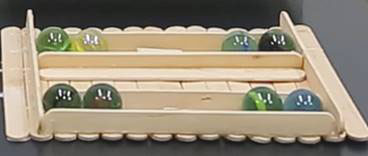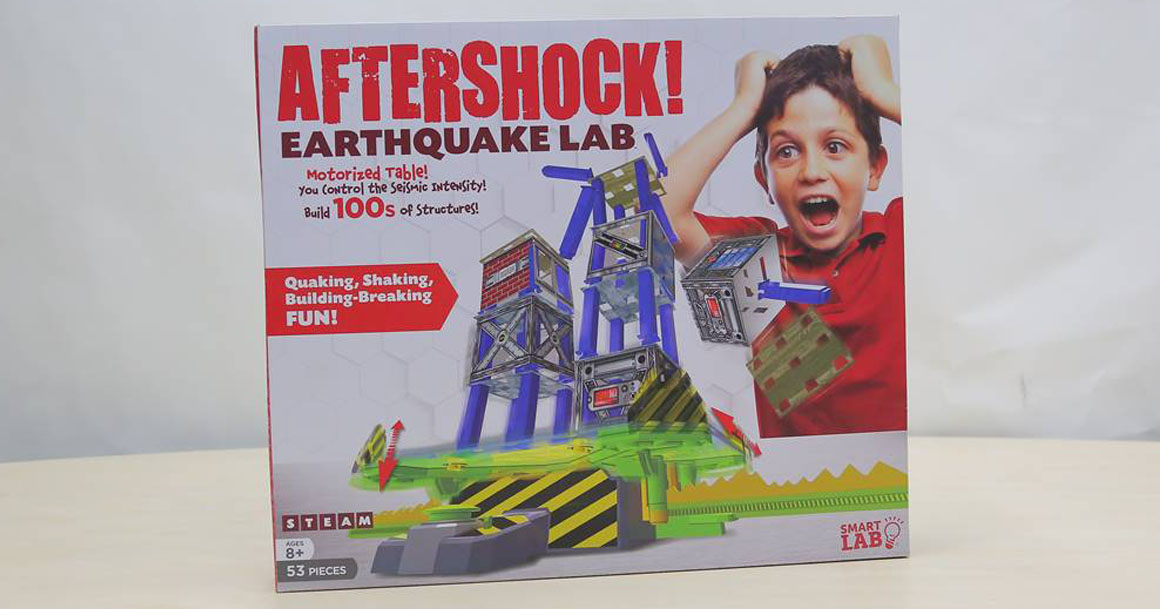地理 X 科學 (S1–S3)Geography x Science (S1–S3)地震的形成與防震建築The causes of earthquakes & shock-proof buildings
學習技能:Learning skill:
DIYDIY
流動裝置Mobile device
前言Introduction
在這個活動,我們會重温地震的成因、以及簡介一些防震建築的基本原理,最後我們會嘗試製作防震建築並進行比賽!
In this activity, we will review the causes of earthquakes and introduce some basic principles of shock-proof buildings. Then, students can make some buildings and take part in a competition!
地理Geography
地震的成因與影響The causes and effects of earthquakes
地震是怎樣形成的?The causes of earthquakes
地球的地殼主要由七大板塊組成,這些板塊承載陸地和海洋,它們受地幔內的對流帶動而緩慢地移動。板塊移動令板塊邊界承受很大壓力,當壓力超過板塊所能承受的上限時,板塊會突然猛烈震動甚至斷裂,把長期累積的能量釋放出來,形成地震。
The Earth’s crust is mainly made up of seven solid rock pieces called plates, which forms the land surfaces and ocean beds. The plates are not static. Driven by the force of convection currents in the mantle, they move apart slowly or collide with each other. When the plates move, pressure builds up along the plate boundaries. When the pressure becomes too large, the plates displace and fracture suddenly. A huge amount of energy is released and an earthquake occurs.
以下是三種板塊的移動方式﹕
The plates move in the following three ways:
地震的強度The strength of earthquakes
The energy released by an earthquake is measured in magnitude by the Richter scale.
震級愈高的地震釋放的能量愈大,破壞力也愈大。
The higher the magnitude,the more powerful the earthquake is.
|


|
地震的影響The effects of earthquakes
地震的影響主要分為直接影響和次生影響。直接影響指地震帶來的即時破壞,包括建築物倒塌、交通及電力中斷、以及引致人命傷亡和財物損失等。次生影響指地震衍生出來的破壞,例如火災、山泥傾瀉和海嘯等。
The negative impacts of earthquakes can be classified into two types: Primary effects and Secondary effects. Primary effects are the immediate and direct destruction caused by earthquakes, such as the collapse of buildings and damage of roads. Secondary effects are the damage caused by primary effects, such as landslide, tsunamis and fires.
試想想Think about
作為經常地震的國家,日本如何利用科技來減少地震造成的損失?試在互聯網上搜尋一些例子。
Earthquakes frequently occur in Japan. How do the Japanese cope with earthquakes using technology? Find some examples on the Internet.
科學Science
防震建築的基本原理The basic principles of shock-proof design
地震傳遞能量的方法How does earthquake transfer energy?
波(wave)能傳遞能量,但不傳遞物質。地震發生時所造成的震動和破壞,主要是來自地震波的傳送。地震釋出的能量藉由介質之振動而往周圍傳播,其傳播方式主要可分為主波(primary wave)和次波(secondary wave)。其中主波是縱波(longitudinal wave),次波則是橫波(transverse wave)。
Waves can transmit energy without the transfer of matter. The negative effects caused by earthquakes mainly come from seismic waves (地震波) . The energy released by earthquakes transmits in all directions by the vibrations of medium. There are two main ways of transmission — Primary wave and secondary wave. Primary wave is a longitudinal wave while Secondary wave is a transverse wave.
防震建築的基本原理The basic principles of shock-proof design
1. 建築方法
1. Construction method
建造建築物時採用更堅固和更具韌性的物料,令建築物更能承受地震的衝擊。此外,應用「三角形穩定性」或加入交叉形的撐桿等建築方法也有助鞏固建築物。
Strong, ductile materials are used to construct buildings that can withstand the shock of earthquakes. The buildings can be made more stable by applying ‘triangle stability’ or by adding cross-braces to the structure.
不容易變形
Difficult to transform
2. 底部隔離(Base Isolation)
2. Base Isolation
底部隔離的原理是使用一些具彈性的物料來把建築物底部與地面隔開。當地震發生時,彈性物料會振動並吸收部分來自地震波的能量,這樣可減少地震發生時傳遞至建築物的能量,並減低對建築物造成的破壞。
In base isolation, the base of a building is separated from the ground and is constructed upon some flexible isolation units. When an earthquake hits, the isolation units vibrate and absorb some of the energy from the seismic waves. This reduces the energy transferred to the building, keeps the building stable and reduces damage to the structure.


一般結構,建築物振動劇烈 並受到嚴重破壞
Normal structure, building vibrates and may become damaged


把建築物底部隔離的防震結構, 振動和破壞較小
Building with base isolation, vibration is reduced
3. 阻尼效應(Damping)
3. Damping
阻尼效應和底部隔離的原理相似,主要是透過緩衝吸收地震波傳遞的能量,減少地震對建築物造成的影響。例如,在大廈內加入一個質量非常大的物體,使它在地震時吸收大部分的動能,台北101大樓便運用了這個設計來防震。日常生活中還有其他設計應用了阻尼效應,例如汽車的避震器,就能有效把動能轉換成熱能。
Similar to base isolation, damping reduces the damage by earthquakes mainly by energy absorption. For example, the skyscrapers Taipei 101 has a massive damper inside the building to absorb the energy from seismic waves. Another application of damping in daily life is the shock-absorber commonly used in cars, which converts kinetic energy to thermal energy.


常用於汽車的避震器,一旦撞車時可以把動能轉換成熱能
Shock absorbers used in cars, which convert kinetic energy to thermal energy when accidents happen.


台北101大樓的阻尼器,它能作出小幅度的搖擺,以減低建築物的振動
The damper in Taipei 101 can swing slightly to counter any vibrations of the building.
如何模擬地震Simulation of earthquakes
Build a ‘vibration table’ using the method below:

預備一塊發泡膠板。
Prepare a piece of foam board.

在發泡膠板上放上數個彈彈波。
Put some bouncing balls on the foam board.

再在彈彈波上放置另一塊發泡膠板。
Then, put another foam board on the balls.

最後,用橡皮圈把 發泡膠板和彈彈波固定。完成!
Finally, use rubber bands to fix the foam boards and the balls. Done!
建築方法一Construction method 1
Materials required:
| Wooden stick | ~60 |
| String | 1 |
| Weight | 1 |
| Glue | |
製作方法:
How to make:
用木條作為支架,製作兩座建築物,其中一座用幼繩懸掛着砝碼。
Use wooden sticks to make the frames of two buildings, one of them hanging a weight by a string.
哪座建築物遇到地震時的晃動較少? 它應用了甚麼防震原理?
懸掛砝碼的建築物晃動較少。
阻尼效應。
Which building vibrates less vigorously when an earthquake occurs? Which shock-proof principle does it use?
The building hanging with a weight.
Damping.
建築方法二Construction method 2
Materials required:
| Paper box | 2 |
| Wooden stick | ~20 |
| Marble | ~8 |
| Coloured water | 2 glasses |
製作方法:
How to make:

用木條和波子製作其中一所房子的「底座」
Use wooden sticks and marbles to make the ‘base’ of one building.
哪座建築物遇到地震時的晃動較少? 它應用了甚麼防震原理?
有「底座」的建築物晃動較少。
底部隔離。
Which building vibrates less vigorously when an earthquake occurs? Which shock-proof principle does it use?
The building with a marble base.
Base isolation.
建築方法三Construction method 3
Materials required:
| Pipe cleaner | ~20 |
| Foam ball | ~20 |
| Glue | |
製作方法:
How to make:
用絨毛條和發泡膠球作為支架,製作兩座建築物,其中一座加上「斜邊」支撐。
Use pipe cleaners and foam balls to make the frames of two buildings, one of them with added diagonal beams for support.
哪座建築物遇到地震時的晃動較少? 它應用了甚麼防震原理?
支架加上斜邊的建築物晃動較少。
建築方法(三角形穩定性)。
Which building vibrates less vigorously when an earthquake occurs? Which shock-proof principle does it use?
The building with diagonal beams.
Construction method (Triangle stability)
比賽Competition
防震比賽Shock-proof buildings competition
現在,同學可以把上述的方法混合和改良,並嘗試發掘更多不同的防震原理,以設計和製作防震建築物來進行比賽。老師將根據以下評核準則,評核學生的表現。
Now, students can design and make a shock-proof building to take part in a competition. Students can combine and improve the previous methods, or even add some new shock-proof principles. Teachers will evaluate the work based on the following grading rubric.
|
評核準則
Assessment criteria
|
水平
Quality of work
|
|
優異
excellent
|
良好
good
|
普通
average
|
尚可
satisfactory
|
差劣
poor
|
|
建築物的防震效能
Shock-proof ability of the building
|
5 |
4 |
3 |
2 |
1 |
|
建築物的大小與高度
Size and height of the building
|
5 |
4 |
3 |
2 |
1 |
|
製作成本
Cost of the building
|
5 |
4 |
3 |
2 |
1 |
|
物料的應用
Use of materials
|
5 |
4 |
3 |
2 |
1 |
|
外觀及創意
Appearance and creativity
|
5 |
4 |
3 |
2 |
1 |
|
整體水平
Overall quality of work
|
5 |
4 |
3 |
2 |
1 |
附加資源Extension
Google科學日誌Google Science Journal
我們可使用Google科學日誌來檢測建築物的加速度,更準確地知道防震措施的效用。
We can use Google Science Journal to detect the acceleration of buildings in order to get a more accurate result of their shock-proof abilities.

* 請注意「Google versions of Science Journal」應用程式已被Arduino Science Journal應用程式取代。
* Please note that the ‘Google versions of Science Journal’ app has been replaced by Arduino Science Journal app.
玩具教材Educational Toy
這盒玩具可用來模擬地震,想了解其玩法和模擬效果,請立即觀看我們的「開箱」影片!
This toy can be used to simulate an earthquake. If you want to know more about the toy and the simulation result, click into our ‘unboxing’ video now!
